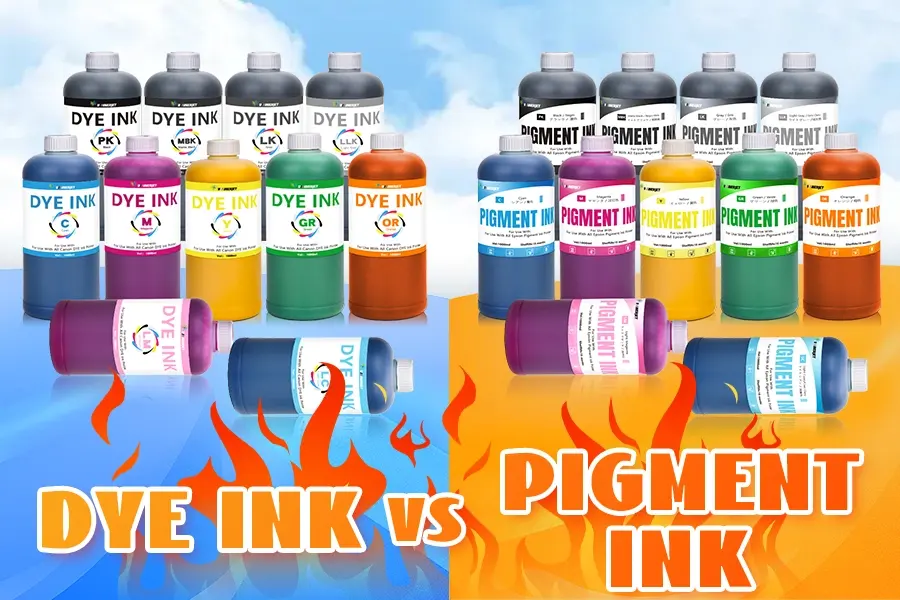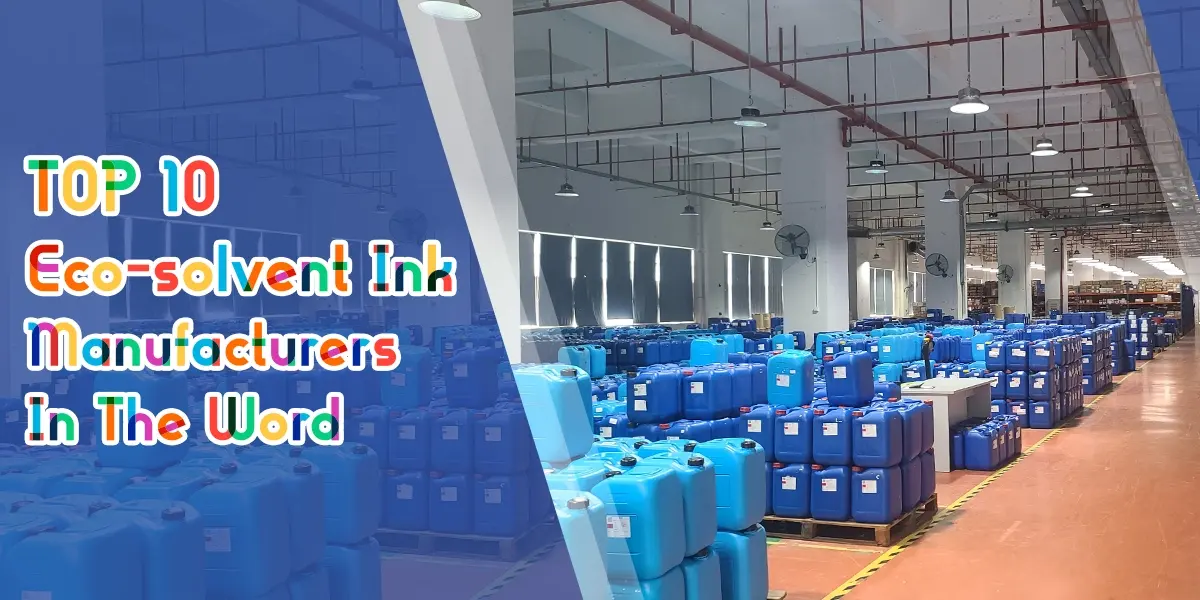In the intricate world of printing and art, dye ink stands out as a fundamental element, yet questions and a lack of in-depth understanding often surround it. Let’s embark on a journey to explore everything about dye ink, from its composition to its applications, advantages, and drawbacks.
The Science Behind Dye Ink
Dye ink is a type of liquid ink that utilizes dyes as colorants. These dyes are unique in that they are soluble in the ink’s carrier liquid, commonly water, although there are also solvent-based versions using alcohol or other solvents. When compared to pigment ink, which contains solid color particles suspended in a liquid, dye ink has a more molecular-level dispersion.
The manufacturing of dye ink begins with carefully selected dyes. These dyes are chosen for their solubility, color intensity, and compatibility with the carrier liquid. For water-soluble dye inks, which are the most common, the dyes are dissolved in water. Various additives are incorporated into the ink formulation along with the dyes and the carrier. These additives serve multiple purposes. For instance, humectants are added to prevent the ink from drying out too quickly, especially in inkjet printers. Surfactants help in reducing the surface tension of the ink, allowing it to flow smoothly through the printer nozzles or pens. Antioxidants are included to protect the dyes from oxidation, which could cause color fading over time.
A Brief History of Dye Ink
The history of dye ink is as rich as the colors it produces. In ancient times, people used natural dyes derived from plants, minerals, and even insects to create inks for writing and drawing. For example, the ancient Egyptians used a form of ink made from soot and gum Arabic, which was a primitive form of what we now know as ink. As civilizations evolved, so did the methods of creating inks. The development of synthetic dyes in the 19th century was a game-changer for the ink industry. These synthetic dyes offered more consistent colors, better solubility, and a wider range of hues compared to their natural counterparts. This led to a significant expansion in the use of dye-based inks, not only in traditional writing and drawing but also in emerging printing technologies.
Applications of Dye Ink
Printing
Inkjet Printers: Dye ink is extremely popular in inkjet printers, especially for photo printing. Its ability to produce vivid and vibrant colors makes it a top choice for consumers who want to print high-quality photos at home. When the inkjet printer ejects tiny droplets of dye ink onto the paper, the ink quickly penetrates the paper fibers. This penetration results in a smooth and continuous-tone appearance, which is ideal for reproducing the fine details and rich colors of photographs. For example, a family looking to print their vacation photos at home would likely use a printer with dye ink to achieve bright and true-to-life colors.
Text Printing: In office settings, while pigment-based black inks are more common for text printing due to their better water resistance and sharper text output, dye-based inks are still used in some cases. Dye-based color inks are often used for printing marketing materials, brochures, and flyers, where the goal is to catch the eye with bold and attractive colors.
Art and Craft
Drawing and Painting: Artists frequently use dye-based inks for drawing and painting. The wide range of available colors and the ease with which they can be blended make them a favorite among illustrators, calligraphers, and watercolor artists. For instance, a calligrapher might use dye-based inks to create elegant and colorful lettering, taking advantage of the ink’s smooth flow and vibrant hues. Watercolor artists can also use dye inks to achieve a unique transparent and flowing effect, similar to traditional watercolors but with the added benefit of a more intense color palette.
Papercraft and Card Making: In the world of papercraft and card making, dye ink is a staple. Crafters use dye-based ink pads to stamp images and designs onto cards, scrapbook pages, and other paper projects. The ability of dye ink to adhere well to paper and provide a crisp, colorful impression makes it perfect for creating handmade cards for special occasions like birthdays, weddings, and holidays.

Advantages of Dye Ink
Vibrant Color Reproduction: One of the most significant advantages of dye ink is its ability to produce extremely vivid and rich colors. The soluble nature of the dyes allows for a more uniform distribution of color, resulting in a wider color gamut compared to pigment inks in some cases. This makes it ideal for applications where color accuracy and vibrancy are crucial, such as photo printing and fine art reproduction.
Cost – Cost-Effectiveness: Generally, dye-based inks are more cost-effective to produce compared to pigment inks. The manufacturing process for dye ink is relatively simpler, and the raw materials (dyes) are often less expensive. This cost – the advantage is passed on to the consumers, making dye-ink cartridges or bottles more affordable, especially for those who print in large volumes or are on a budget.
Smooth Flow and Low Clogging Risk: Dye inks have a lower viscosity and a more uniform molecular structure, which enables them to flow smoothly through printer nozzles, pens, or airbrushes. This smooth flow reduces the risk of clogging, ensuring consistent and reliable performance, especially in inkjet printers that rely on precise droplet ejection.
Disadvantages of Dye Ink
Fading and Water Sensitivity: Dye ink is more prone to fading when exposed to light over time. The dyes in the ink are sensitive to ultraviolet (UV) rays, which can break down the chemical structure of the dyes and cause the colors to fade. Additionally, because most dye inks are water-soluble, they are not very water-resistant. A printed document or artwork made with dye ink can smudge or bleed if it comes into contact with water. This makes dye-ink prints less suitable for applications where long-term durability and resistance to environmental factors are required, such as outdoor signage or archival documents.
Color Migration: In some cases, especially when printed on certain types of paper or fabrics, dye ink can exhibit color migration. This means that the colors can spread or bleed into adjacent areas over time, leading to a loss of sharpness and clarity in the printed image or design. This is particularly noticeable in prints with fine details or where multiple colors are used nearby.
Choosing the Right Dye Ink for Your Needs
When selecting a dye ink, several factors need to be considered. First and foremost is the intended application. If you are primarily printing photos for personal use and want vibrant colors, a high-quality dye-based inkjet ink would be a great choice. However, suppose you are creating documents or artworks that need to be long-lasting and resistant to fading and water. In that case, you might need to look into archival-quality dye inks or consider pigment inks instead.
The type of printer or application tool also matters. Different printers are designed to work optimally with specific types of inks. For example, some inkjet printers are specifically calibrated to use a particular brand or formulation of dye ink to achieve the best color accuracy and print quality. Additionally, if you are using the ink for art and craft projects, such as calligraphy or watercolor painting, you may want to choose an ink that has a smooth flow and is easy to blend.
In conclusion, dye ink is a versatile and widely used medium in the world of printing and art. Understanding its properties, applications, advantages, and disadvantages is essential for making informed decisions when it comes to choosing the right ink for your specific needs. Whether you are a professional printer, an artist, or a hobbyist, the right choice of dye ink can significantly enhance the quality and longevity of your work.



